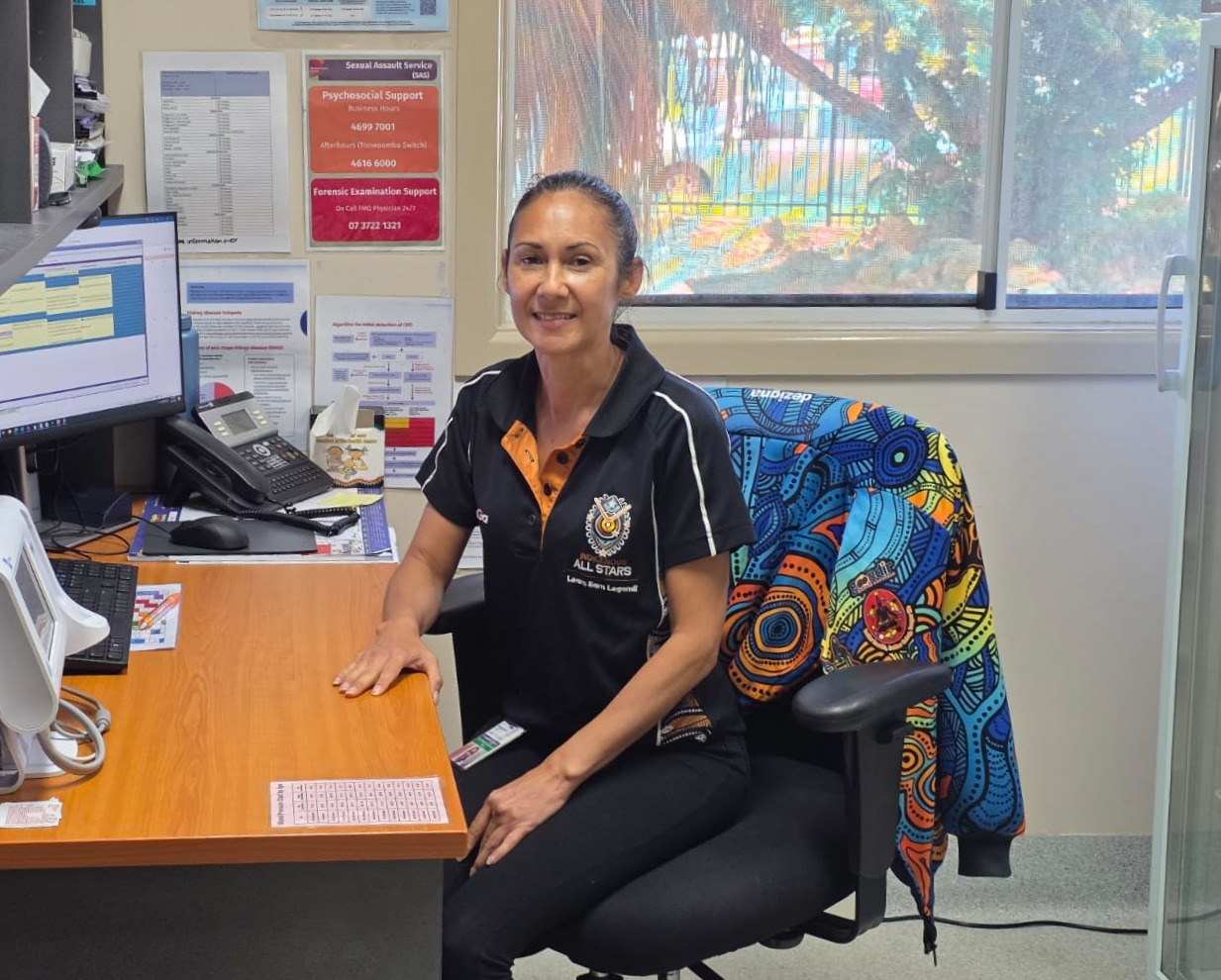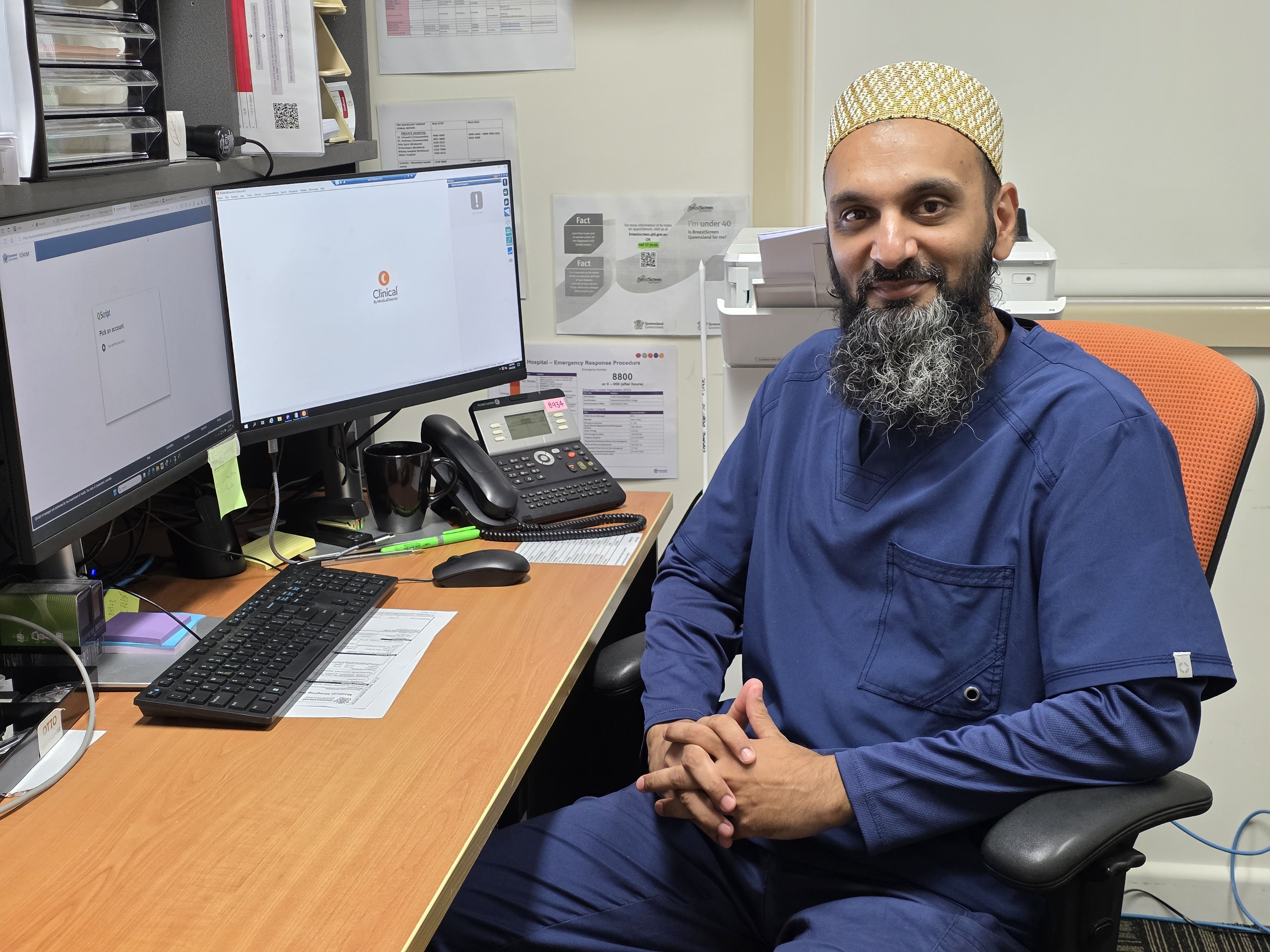
Aboriginal and Torres Strait Islander Advanced Health Practitioner Franchester Duncan plays a crucial role in ensuring the community connect with local healthcare services.
The latest data from the Australian Institute of Health and Welfare (AIHW) shows Queensland is taking steps in the right direction towards Closing the Gap.
Closing the Gap aims to reduce inequalities between First Nation peoples and non-First Nation Australians across a range of socio-economic areas, including health and education.
Health targets include closing the life expectancy gap by 2031, which is driven by child mortality rates, and preventing and managing risk factors and chronic conditions which disproportionately affect First Nation peoples.
Vital to keeping all Queenslanders healthy is early detection and preventive healthcare, and one way this is achieved is through the First Nations health check service. AIHW’s biannual Health checks and follow-ups for Aboriginal and Torres Strait Islander people (update) report shows Queensland outperforms other states and territories with First Nation peoples engagement with Medicare’s free annual health check service.
These health checks ensure First Nation peoples have access to a ‘one stop shop’ appointment with a General Practitioner (GP), to identify risks of ill-health early and prevent chronic conditions from developing.
The check takes up to an hour and, pending the age of the patient, will test things like blood pressure, blood sugar levels, weight and height, a blood and urine test, and talk about family history.
The latest data shows three-quarters (75 per cent) of Queensland’s First Nations population had received at least one health check (197,000 patients) in 2023-24.
This is compared to just 37 per cent (26,400) of Victoria’s First Nations population.
Fifty per cent of Queensland First Nation peoples who had a health check in the 2022/23 financial year, returned for a follow up service within 12 months.

Cherbourg Hospital in Darling Downs Health.
Darling Downs Health Aboriginal and Torres Strait Islander Advanced Health Practitioner Fran Duncan, who is stationed at Cherbourg Hospital, west of Gympie, said health check appointments are becoming more and more popular.
“We’re a relatively new clinic here, and we’re already booked out well into May,” Ms Duncan said.
“I’ve seen first-hand the positive impact these health checks have on the community.
“A lot of people who come to us for the first time find the service really beneficial.
“They walk away with a much better understanding of their personal health risks and what they can do to minimise their chances of developing chronic illnesses.
“Having a one-on-one conversation allows us to give personalised advice that cuts through what can be an overwhelming amount of health information.”
Cherbourg Community Health Doctor Hozefa Nooruddin has been in the community for a year and says the key to a high uptake in health checks is earning trust.
“It’s a good sign when my patients ask me, ‘can you see my aunty?’, ‘can you see my kids too?’”, he said.
“It shows trust in me, in the healthcare system.”

Cherbourg Senior Medical Officer Dr Hozefa Nooruddin.
For Doctor Nooruddin, these health checks have helped with the management and prevention of type 2 diabetes, which disproportionately affects First Nation peoples.
One of the ways type 2 diabetes is measured is by checking A1c levels in the bloodstream, with a good level being less than seven per cent.
“We have been seeing levels anywhere between seven per cent and 14 per cent, and anything above nine per cent is becoming dangerous.
“Untreated diabetes at high levels like these means it can lead to some serious complications that can be extremely hard to reverse, such as kidney failure, blindness, heart attacks and strokes.
“In just six months, we’ve been able to get a lot of people down from 14 per cent to seven per cent, which is such a significant difference.
“It’s remarkable, and it’s because we have people attending health checks, listening to health advice, and making lifestyle changes.
“First Nation peoples are disproportionally affected by things like kidney failure, diabetes, heart disease, strokes, and so on.
“It’s encouraging to see these kinds of results, and I can’t wait to look back in 10 and 20-years’ time and see the significant change in the entire community.”
First Nations health checks explained
First Nations health checks are funded by Medicare with an aim to ensure First Nation peoples get a free health check by GPs, specifically tailored to their needs each year.
This approach promotes early detection and preventative care and help GPs to identify common health conditions that disproportionately affect First Nation peoples, including diabetes and heart disease.
It is easier to prevent chronic conditions than to treat them, so catching them early can make a big difference.
Half of patients aged 45 to 54 in Australia who had a health check between 2023-24 also accessed services for chronic disease management.
Meanwhile, nationwide 42 per cent of First Nation peoples aged 65 and over had a health check in 2023-24, compared with only 23 per cent of those aged 15 to 34.
While it is encouraging to see almost half of those above 65 years are accessing this service, there is more work to do to get younger Australians engaged so health checks, literacy, and education starts earlier in life.
Free health checks are available at any Aboriginal Medical Service or bulk-billing clinic. Learn more here .
What is Queensland Health doing to Close the Gap?
According to the latest Chief Health Officer’s Report (The Health of Queenslanders), First Nation Queenslanders have the second highest life expectancy in Australia among all the states.
But there’s still more to do.
That’s why Queensland Health has placed First Nation peoples and their voices at the forefront of healthcare service design and delivery through the First Nations First Strategy 2032.
Designed by First Nation peoples for First Nation peoples, this strategy is accelerating efforts to Close the Gap to achieve excellence in healthcare and health equity in Queensland.
By 2023, the First Nations First Health Strategy 2032 aims to:
- increase quality, safety, and equity
- maximise the health and wellbeing of Queenslanders
- be more innovative, connected, and sustainable
- create workforce that is agile, skilled, and valued.
Take a look at the vision that guides the HEALTHQ32 First Nations First Strategy 2032.